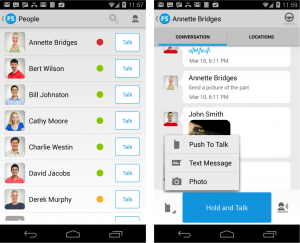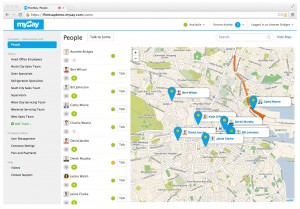Q&A What are some of your current and past telecom app development projects?
Some of my projects include:
- 2013-now : mySay messaging as a service
- 2008-now : Dial2Do white label Handsfree Assistant – “Siri for the rest of us” (well become Siri ever existed)
- 2005-2008 : Parlay and IMS (IP Multimedia Subsystem) based Apps / Services (call centre control)
- 2003-2005 : MobileWorkForce Solutions (sales, field service, field marketing)
- 2000-now : Mobile middleware (proximity platform, embedded on handsets, shipped on 300M phones, LocalSocial)
We have had a consistent interest in mobile software and platform middleware, as well as figuring ways to take voice and messaging to the “next stage” in enterprise and SME (Small and Medium Enterprise) apps and services. The latest product, MySay, offers ‘messaging as a service’. We provide hosted solutions to industry partners looking to offer standalone or integrated messaging services including PushToTalk, text and photo messaging.
Building on mySay (and also harking back to some of our earlier work) we integrate with software and hardware solutions for the mobile workforce, including VXi BlueParrott – the #1 provider of headsets to the trucking industry. So we’re starting to roll out more vertically integrated solutions for specific industries “from server to headset” as we like to say 🙂
Q&A How did you get involved in Telecom App Development?
Well, the trouble all started when we did our first few Mobile Workforce projects in Europe back in the Stone Age (2003-2004). At that point, we developed a number of solutions for sales and field service personnel on the road. At the time, there were no SmartPhones as such, and mobile data was something called GPRS 🙂
So we partnered with O2 and used their state of the art device – the O2 XDA – to deliver solutions that could connect workers on the road (field service, sales and field marketers) back to their Enterprise Systems at base. As we did this, we found ourselves asking O2 the same thing over and over again: “Hey – could we get access to your <mumble mumble> API?”. For “mumble mumble”, insert any of Location, Voice, Messaging, and so on. We never mentioned billing 🙂 The answer, aside from a really, really simple SMS API was, “um, no”.
So you could say we crystalized our own need for open Telecom APIs from the “demand side”. We realised that if there was some way to get access the core telecom functions and features via a standardised API, we could really add considerable value in the app and service for Enterprises and small businesses.
Then along came Parlay, and Aepona. We had a standards-based perspective and background in the company, and so we really “bought the cool-aid” on the potential for Parlay to provide standardised APIs to the all Telecom “goodies” if adopted by Operators. We partnered with Aepona to create some value-add services using the Parlay APIs, and we even sold one of these to an Operator! However, as we did this we realised that adoption was actually quite slow, and so we began to explore other ways to “roll our own” APIs adjacent to or along side the Operator.
We ended up experimenting with a variety of technologies and APIs to give us some basics of both voice and messaging control at sufficient quality and reach. And that lead us to experiment with a variety of possible new services, which lead to Dial2Do.
Dial2Do (www.dial2do.com) which was our first real voice-centric product – is a voice-based Handsfree Assistant. It lets users conduct common tasks by voice, including voice to text, email as well as social applications like Facebook and Twitter.Here, we picked an innovative (for its time) channel to market (headset manufacturers). We bundled the HFA with the Headset, providing the headset manufacturer with incremental revenue and better engagement with their own customers. Dial2Do has now shipped with millions of Bluetooth headsets from white label partners including Plantronics, Jabra and Jawbone.
In 2013 we launched our new Messaging service for the mobile workforce – MySay. While we describe it as a “messaging as a service”, we really think of it as a rich message “fabric” (voice, ptt, text, photo) that can be seamlessly worked in to other apps and services, whether web, mobile or both. The really hard thing here is to make it so that it’s easy to drop in to those verticals, such as workforce management, and the initial reaction from that quarter has been encouraging.
Q&A What are you hoping to get out of TADHack?
First off, the it’s always good to meet your peers who are working on similar issues, and to share experiences, trade some learnings and insights, and get some fresh tools in the armoury to tackle the job back at base. While we have great access to tools and technologies, it’s always incredibly useful to get like minded people together in the same (virtual) room to share challenges, hear about operators and API initiatives underway, and perhaps even do some business.



Sean O! Long time, no see. Really good to hear your name again.
Sean! Where have you been? It must be two years since I last saw you! Hoping to see you in person [or failing that by remote link] at TADHack in Madrid! And you too Tom!
If I make it over, the pink drinks are on me, James.